L-Prize Concept Phase winners propose next-generation SSL designs (MAGAZINE)
During the Department of Energy (DOE) Solid-State Lighting R&D Workshop on Feb. 3, U.S. Secretary of Energy Jennifer Granholm announced the winners of the Concept Phase of DOE's latest L-Prize competition. The program aims to spark innovation with interoperable LED lighting systems in commercial building applications. These systems can include LED luminaires, sensors, control devices, and interfaces.
I helped design this iteration of the L-Prize competition, which was last held a decade ago. In the Concept Phase, we encouraged competitors to submit designs that go beyond current constraints in lighting innovation, such as cost, form factor, materials, and controls. Entrants were invited to imagine and design concept systems that attain energy efficiency, lighting quality, connectivity, and life cycle requirements beyond those of current commercially available products with a consideration toward issues related to environmental sustainability and diversity, equity, and inclusion (DEI). The announcement by Secretary Granholm culminated an exciting first round of design and engineering for the entrants.
The competition's first phase also invited participation from all interested teams or inventors. We supported the submission of concepts from known to nontraditional manufacturers, including garage inventors and academics. Seeing submissions from individuals, small teams, and experts outside the lighting industry that introduced new perspectives to this challenge was exciting. Our expert reviewer panel (ERP) examined and scored all eligible submissions and selected four as winners for this phase. Each winner received $20,000 in prize money. Below are the features and innovations that the ERP scored highly, as well as information on the four winners.
Project Tango
QuarkStar, an international group of lighting thought leaders working in partnership with Nichia, submitted a networked white-tunable luminaire concept for retrofit projects. The concept, dubbed “Project Tango,” leverages innovations in optics, LED construction, and power conversion technology. The ERP was impressed by its novel optical design and potential to simultaneously deliver extremely high optical efficiency and precisely controlled light distribution.
QuarkStar’s proposed concept uses OpenThread, an open-source networking protocol developed by Google. To date, open-source protocols have not gained much traction in commercial lighting, but they have potential to enable greater interoperability among building systems, including lighting. Other notable highlights include top-to-bottom design decisions geared toward sustainability and waste reduction, such as predictive maintenance and modular replacement and upgrades that can be serviced in-field. Based in Las Vegas, QuarkStar has a long track record of workforce diversity in its innovation and IP teams, which earned the company bonus points in the DEI category. (Editor’s note: Learn more about QuarkStar in this issue’s profile feature.)
Sustainable and connected troffer retrofit
Orion Energy Systems of Manitowoc, WI, took on the fluorescent-to-LED retrofit with its entry. The concept included a high-efficacy, networked LED luminaire with advanced controls that could be swapped in place of an existing fluorescent luminaire in less than 2 minutes.
The ERP liked Orion’s application of advanced capabilities to retrofit situations, which represent an estimated 90% of the overall lighting market. The concept’s quick installation of an advanced controls platform would also address a current barrier in the market. The ERP also praised the luminaire’s high efficacy (184 lm/W), excellent color quality, and use of plug-and-play standards–based controls, which can decrease costs and increase adoption. A modular light engine is designed for upgrading in the field to improve or change the performance. The modular approach not only allows for potential efficacy maintenance or increases but also enables better end-of-life outcomes, such as recycling or proper disposal of e-waste. Finally, diversity among design and engineering team members and the inclusion of diverse STEM (science, technology, engineering, and mathematics) students via internships earned bonus points.
Laterally symmetrical Level 3 engine for 3D printing
Startup Smash the Bulb of Mountain View, CA, teamed with Bridgelux of Fremont, CA, on a 3D-printed, semi-indirect luminaire concept that uses a high-performance light engine that requires no secondary optics to deliver high efficacy and quality of light. The ERP liked the luminaire’s innovative optical design, which addresses glare and reduces losses. Reviewers found the 3D-printed luminaire housing intriguing for its ability to be produced at a job site to mitigate supply-chain challenges and to reduce the environmental impact of packaging and shipping luminaires from afar. From a networking perspective, the ERP liked the multiprotocol compatibility (DALI, 0–10V, Bluetooth), which would help support interoperability with other systems.
Papaya Modular Lighting Ecosystem
Papaya of Evanston, IL, was a unique winner in that the team comes entirely from outside the lighting industry. Its Modular Lighting Ecosystem concept proposes an open-source, community-based approach in which innovators of all disciplines can participate in evolving this lighting solution over time. Some reviewers were excited about this model while others questioned its viability in the fast-paced, competitive lighting market. Seeing whether this concept can be brought forward as a working prototype and ultimately a commercially available product will be interesting.
Beyond the open-source model, reviewers were intrigued by the concept’s highly modular design and use of advanced technology, including a light module that has potential neural network and machine-learning capabilities.
Next up: L-Prize Prototype Phase
The Concept Phase of the L-Prize called for out-of-the-box thinking and novel approaches from innovators across the nation. The upcoming Prototype Phase opens this summer and seeks working lighting-system prototypes that meet the rigorous L-Prize energy efficacy, light quality, connectivity, and product life cycle requirements — the combination of which should exceed the capabilities of currently available products. This phase is open to anyone, regardless of whether they participated in the Concept Phase. Entrants are welcome and encouraged to build and submit prototypes, which the ERP will evaluate and score. Winners in the Prototype Phase will share a $2 million prize pool.
When we open the Prototype Phase, we will also issue a request for information (RFI) aimed at connecting parties interested in possible teaming arrangements for production, installation, evaluation, demonstration, and/or deployment of systems. This partner RFI will be kept open throughout the L-Prize duration and posted on the L-Prize website. In the meantime, those seeking partnerships can check the L-Prize website, which currently lists 29 teams and 193 innovators that have already signed up.
Congratulations to the Concept Phase winners, and good luck to everyone participating in the Prototype Phase. We are closer than ever to revolutionizing the lighting industry and excited to see what happens next.
For up-to-the-minute LED and SSL updates, follow us on Twitter. You’ll find curated content and commentary, as well as information on industry events, webcasts, and surveys on our LinkedIn page and our Facebook page.
Kate Hickcox, Lighting Research Scientist
KATE HICKCOX joined Pacific Northwest National Laboratory (PNNL) in 2020. She is a creative thinker with over 20 years of experience in lighting, research, and design. Hickcox’s work focuses on sustainability, which means considering the complex aesthetic, technical, visual, and non-visual needs of people while at the same time equitably benefiting the economy, society, and the environment. Her work at PNNL includes supporting Energy Equity and Justice in Systems Technology work, leading decarbonization and circularity efforts for lighting and other mechanical and electrical systems, and work in outdoor nighttime lighting. She has authored or co-authored many technical publications/reports and has presented at LightFair International, IALD, LEDucation, the CIE, and the IES on many topics. Hickcox is currently a member of the IES Standards Committee, member of the ASHRAE Building Decarbonization Whole Life Design Guide working group, Secretary of the IES Technical Committee: Discomfort Glare in Outdoor Nighttime Environments, and a contributing member of the IES Sustainability Committee.
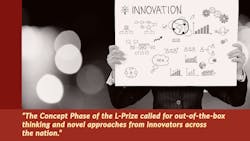
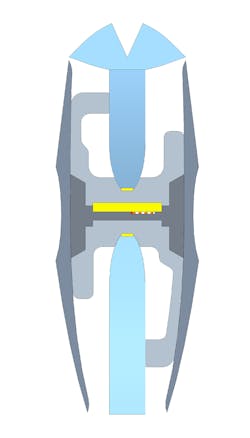
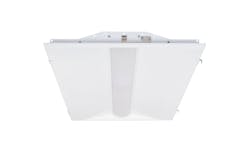
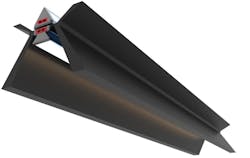
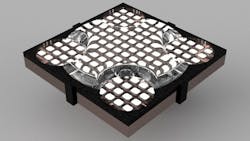



![The DesignLights Consortium continues to make progress in shifting outdoor lighting products and implementation practices toward a more restrained and thoughtful strategy. [Image does not represent a DLC qualified fixture.] The DesignLights Consortium continues to make progress in shifting outdoor lighting products and implementation practices toward a more restrained and thoughtful strategy. [Image does not represent a DLC qualified fixture.]](https://img.ledsmagazine.com/files/base/ebm/leds/image/2024/08/66be810888ae93f656446f61-dreamstime_m_265700653.png?auto=format,compress&fit=&q=45&h=139&height=139&w=250&width=250)
